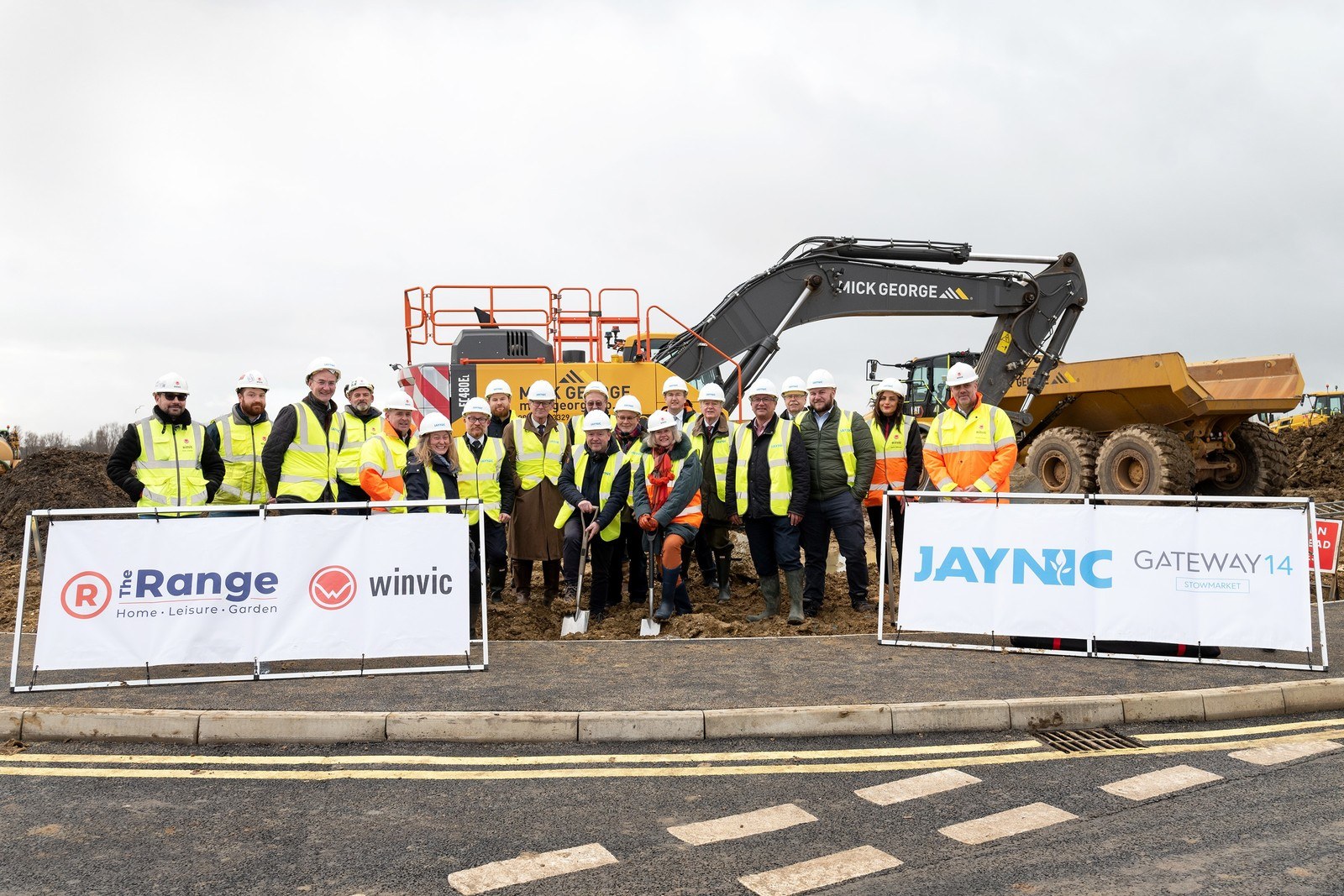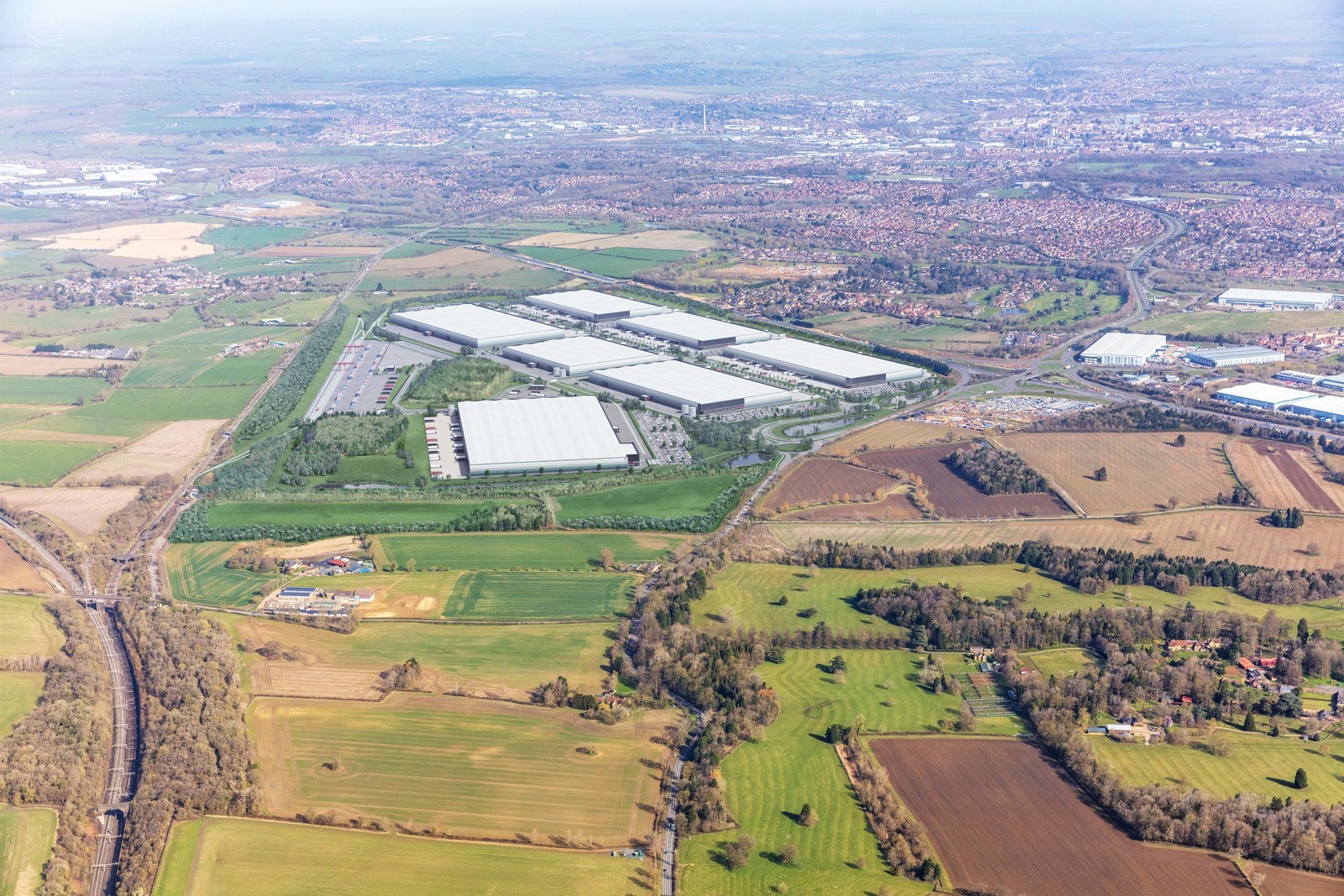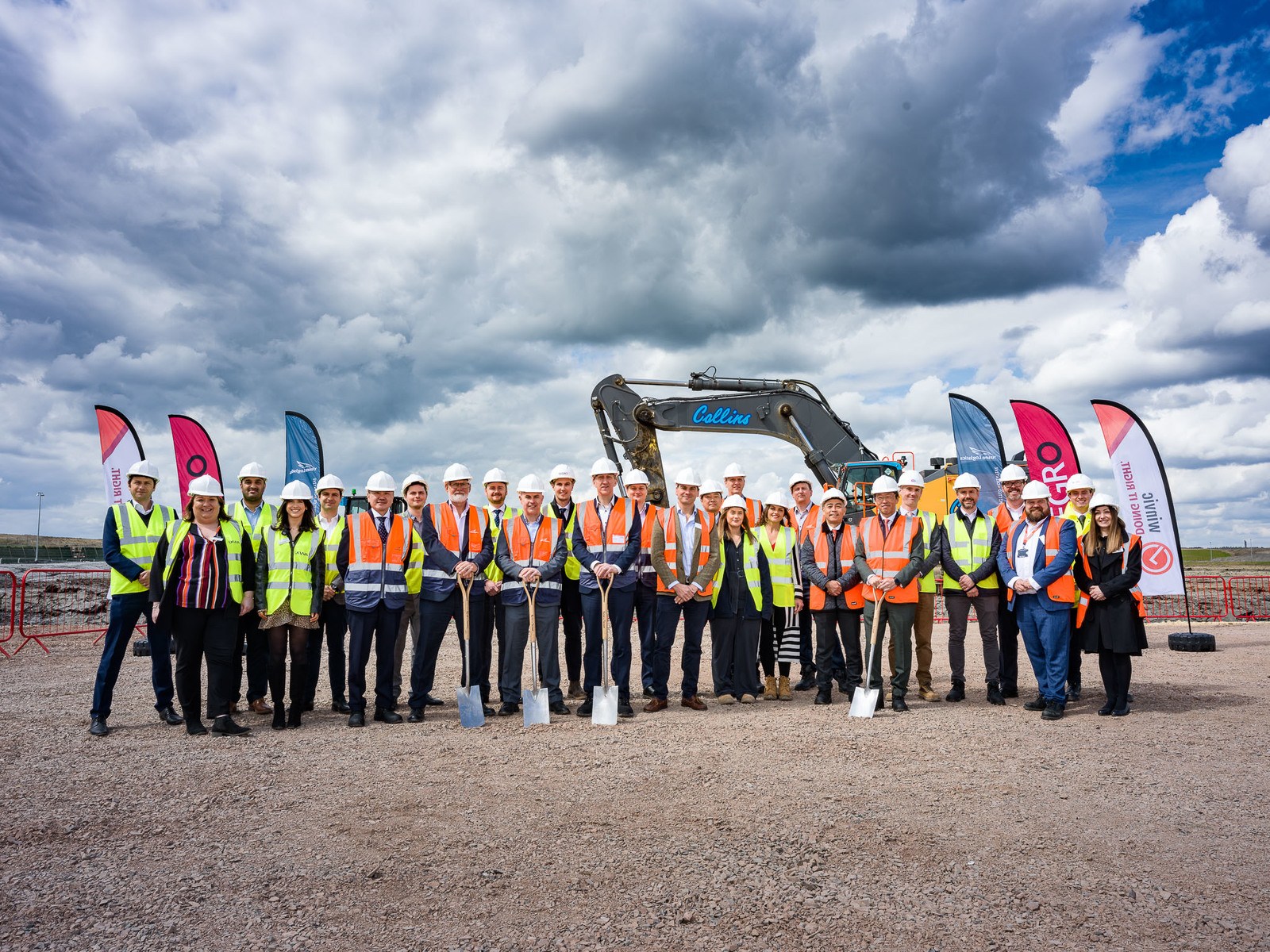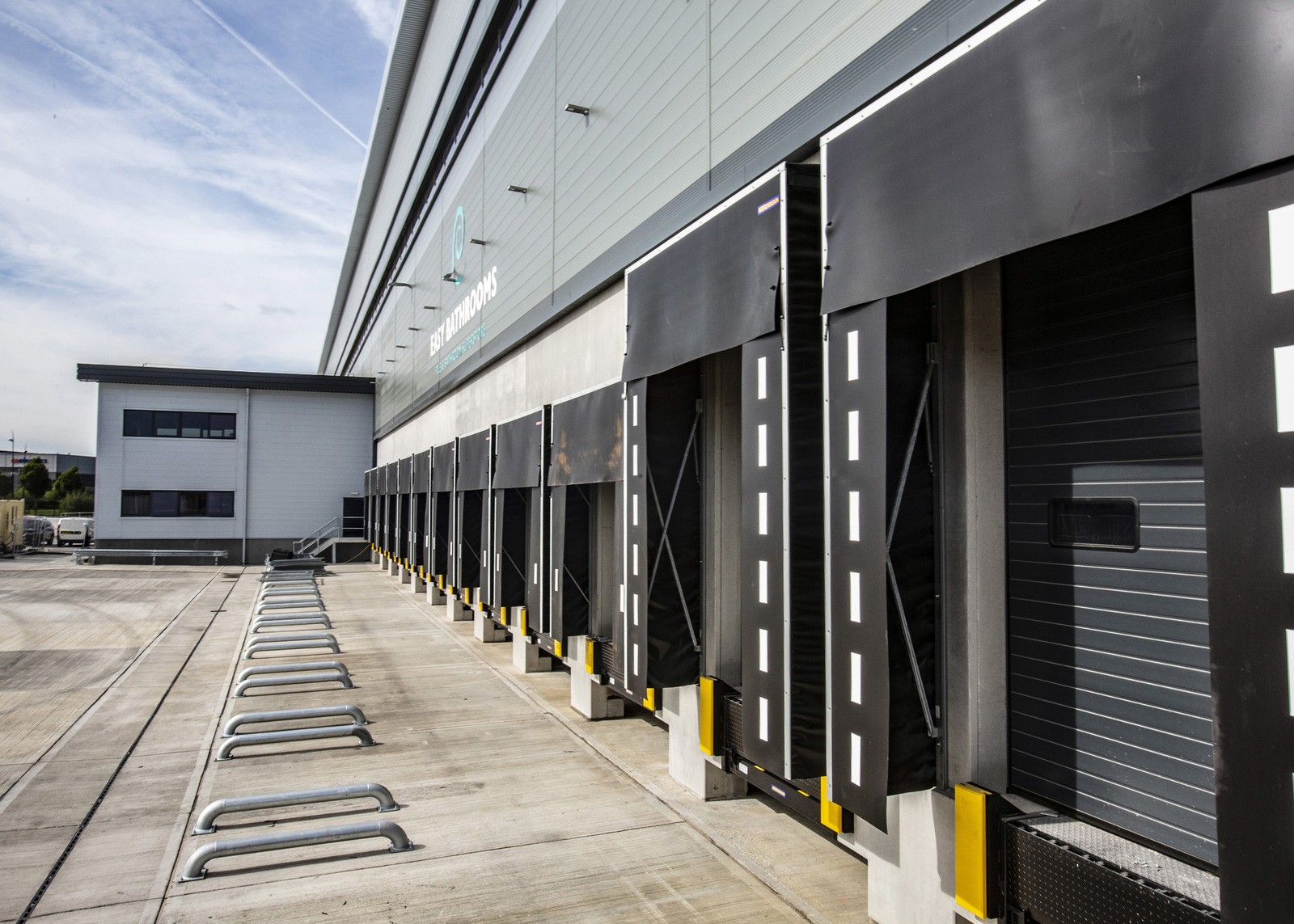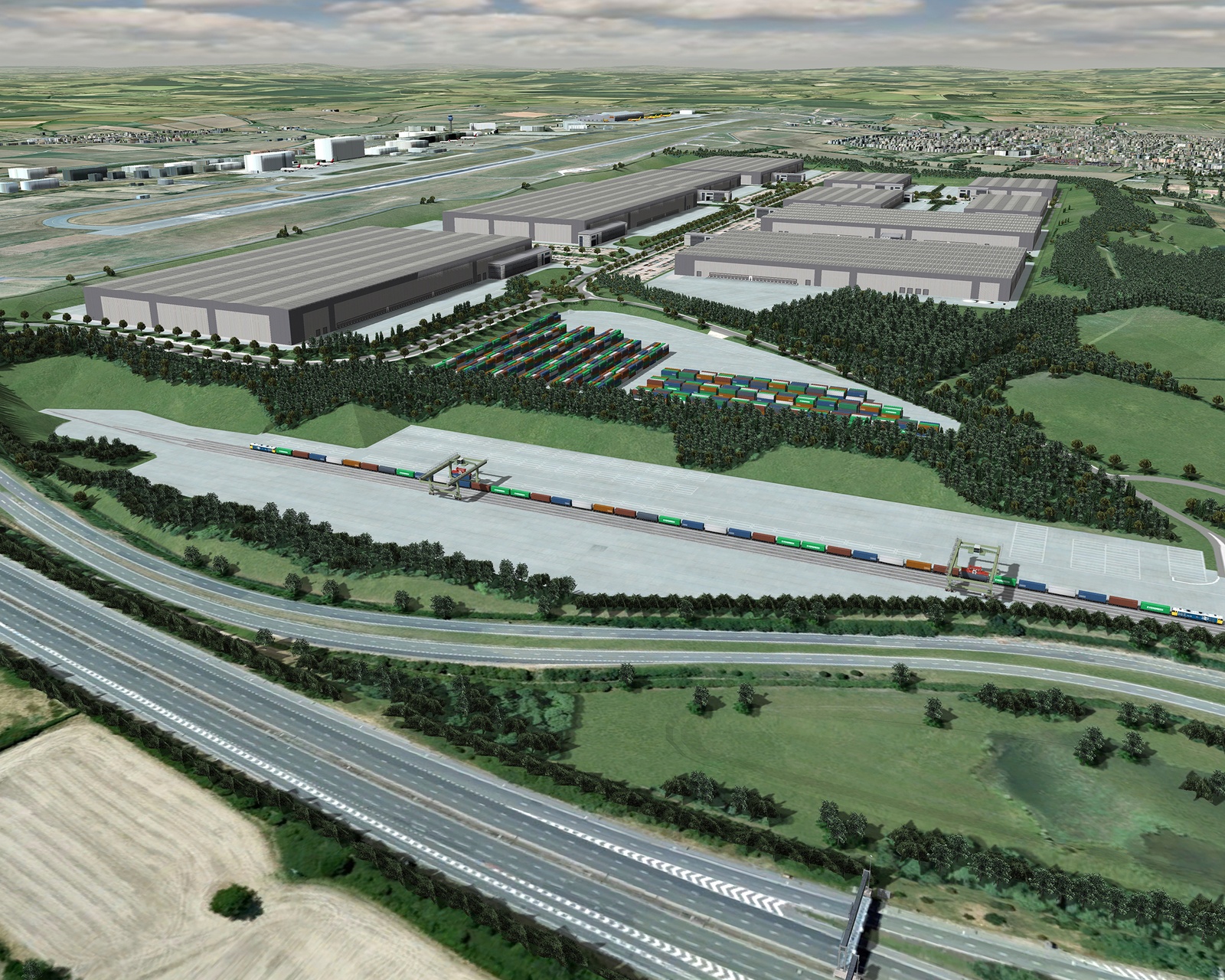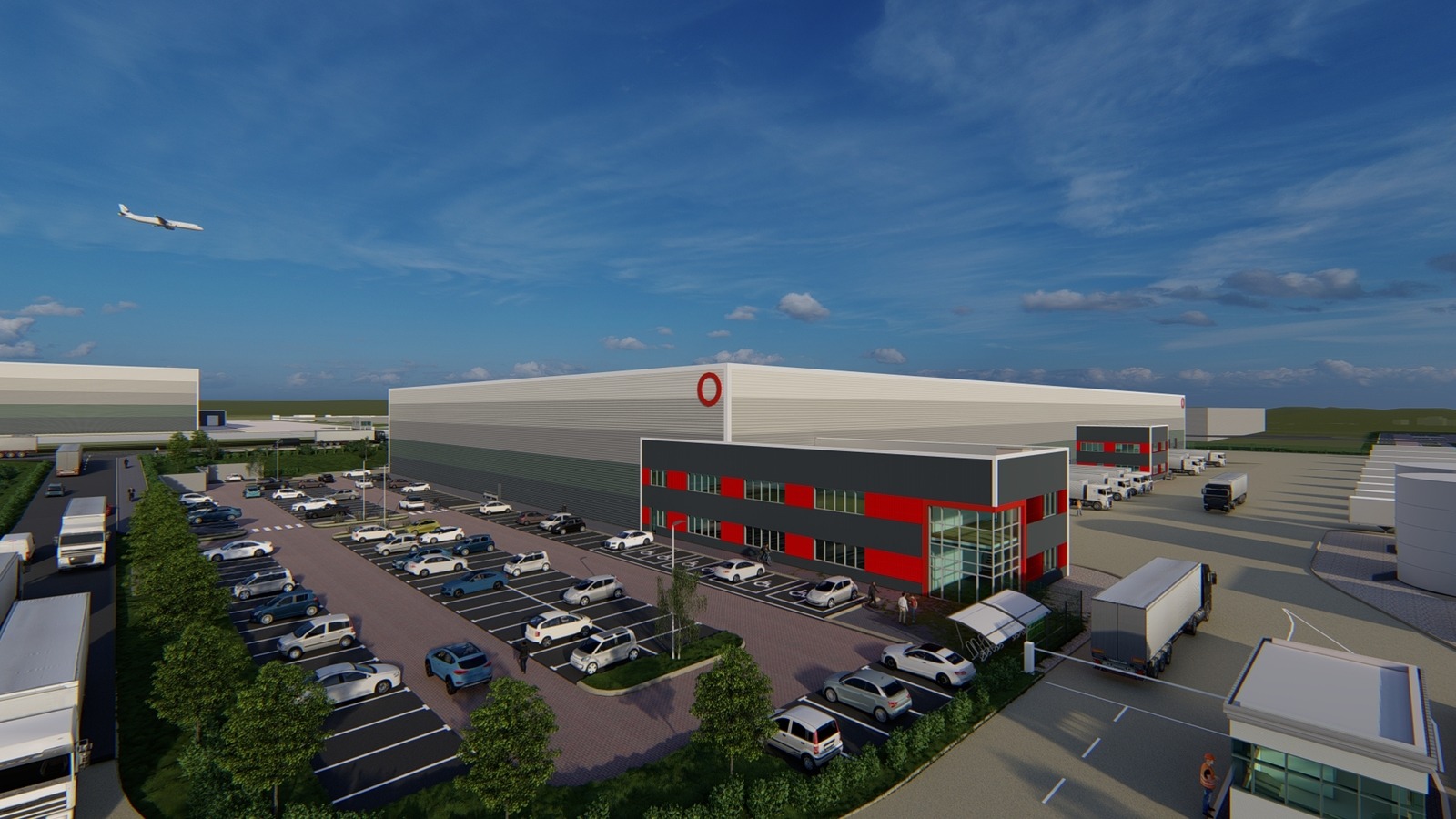On 22 May 2024, on the second day of UKREiiF – the UK’s Biggest Real Estate & Investment & Infrastructure showcase – Winvic hosted a panel discussion on arguably the hottest topic in construction right now; How to Achieve a Net Zero Built Environment: The Challenges with Embodied Carbon Data and Accurate Whole Life Cycle Assessments.
The built environment accounts for 30% of carbon emissions in the UK so the pursuit of Net Zero carbon emissions is not just a goal but a necessity. In the one-hour session, Chair, Georgina Penfold, and the six panellists delved into the complexities and challenges around accurately assessing and mitigating carbon emissions in buildings and infrastructure. Embodied carbon data and whole life cycle assessments are at the heart of this, but it does present challenges. Accurate data collection, standardisation of methodologies, supply chain collaboration and the integration of low carbon designs, materials, and construction processes are just some of the hurdles we must overcome.
Participants
Fiona Lomas-Holt – Director in the Sustainability and ESG team at Turley: expertise in whole life carbon assessment and building certification.
Arun Thaneja – Technical Services and Sustainability Director at Winvic: expertise is sustainability generally with a focus on whole life carbon and operational carbon.
Danielle Sheppard – Senior Investment Director and Head of Sustainability at Barwood Capital: investor developer viewpoint with sustainability knowledge.
Stuart McCallion – Head of Technical Development at SEGRO: responsible for all SEGRO’s UK developments.
Anna Tsartsari – Co-founding Director, Head of ESG and Sustainability at Built Environment Design Partnership: a civil engineer by trade and sustainability credentials.
Martin Cooper – Vice President at Prologis: responsibility for delivery and very much focusing on sustainability and social value, coordinating how Prologis undertakes Life Cycle Assessments

What do you think are the biggest barriers at the moment to achieving Net Zero and or other sustainability goals?
Arun Thaneja: Generally, on a day-to-day basis our biggest hurdle at the moment is the lack of data. We get presented with lots of data but whether it’s accurate data or whether it’s assumptions that are being made has a very large differential on what LCAs (Life Cycle Assessments). The biggest hurdle we tend to find is the supply chain that is doing the design elements extracting the relevant data for their EPDs (Environmental Product Declarations) and their GWPs (Global Warming Potentials).
Why is this important?
Anna Tsartsari: The World Green Building Council has set some targets by 2030, we need to reduce our embodied carbon by 40% so that is quite a challenging requirement. You might have heard of the sustainability disclosure requirements which are going to be mandatory end of May 2024. We cannot just make some statements and say we’re green, we’re Net Zero and we are targeting sustainability credentials, we need to have a lot of evidence and data is the evidence we need. If we cannot measure it, we cannot reduce it.
Fiona I’m going to come to you as an ESG lead, what’s your experience as a consultant in actually doing this?
Fiona Lomas-Holt: I’ve been in the industry around 10 years and I would say although whole life carbon assessments have always been around they’ve really only hit mainstream I would say in the last four to five years. That was led partially voluntarily, through speculative builders looking to put their projects on the market, but also starting to filter through planning policy. Then the Net Zero agenda really started to push forward, ESG corporate policies have started to push forward and that that’s where we’ve really seen that drive in the increase in whole life carbon assessments.
Martin, you’re coming from a very different perspective. You’re the asset owner, you have big buildings everywhere. What does this sort of data collection process mean to you?
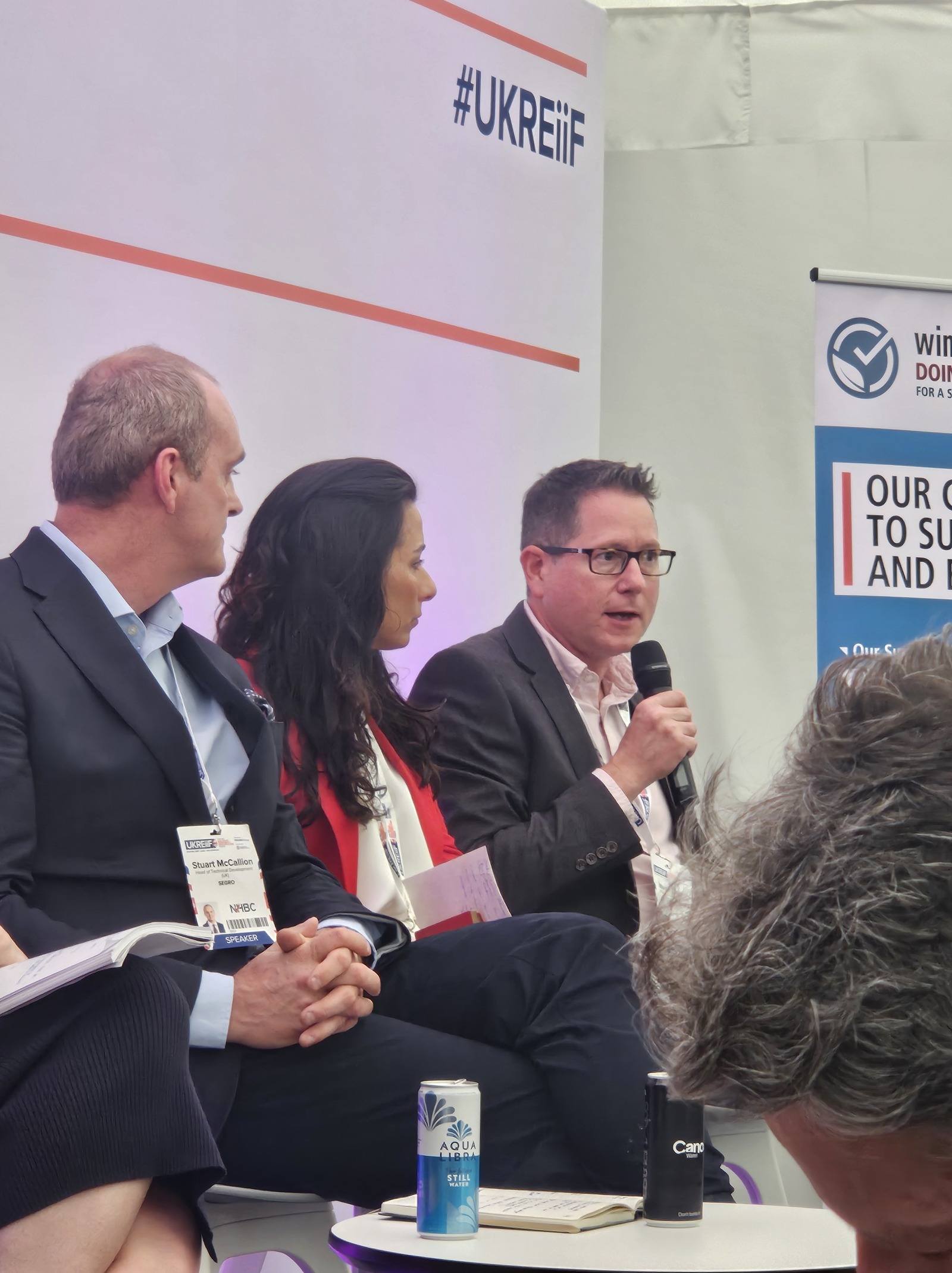 Martin Cooper: The most sustainable way to build a building is to make sure it lasts a long time. We focus on driving out embodied carbon through careful design, so a fabric first approach so that the building only needs to use a small amount of operational energy. We look to deliver EPC A+ buildings. The building generates as much energy as it will consume throughout a year. In terms of future operational energy that’s the way to go.
Martin Cooper: The most sustainable way to build a building is to make sure it lasts a long time. We focus on driving out embodied carbon through careful design, so a fabric first approach so that the building only needs to use a small amount of operational energy. We look to deliver EPC A+ buildings. The building generates as much energy as it will consume throughout a year. In terms of future operational energy that’s the way to go.
It’s important to us as owners, it’s important to our customers because it makes the building a lot more efficient and cheaper to run but it’s also important to investors – so providing buildings that they can invest in and allocate green bonds to and those sorts of things. Fourth, it’s important for communities as well; if we can say the buildings are the very, very best of their kind and they’re going to create a logistics park that’s a pleasant place to work and be around that helps.
So, tying all that back to data – we need to be able to demonstrate all of those claims and having that data externally validated is absolutely the way the way to do it.
Do you need extraordinary data to deliver extraordinary spaces? What’s your experience?
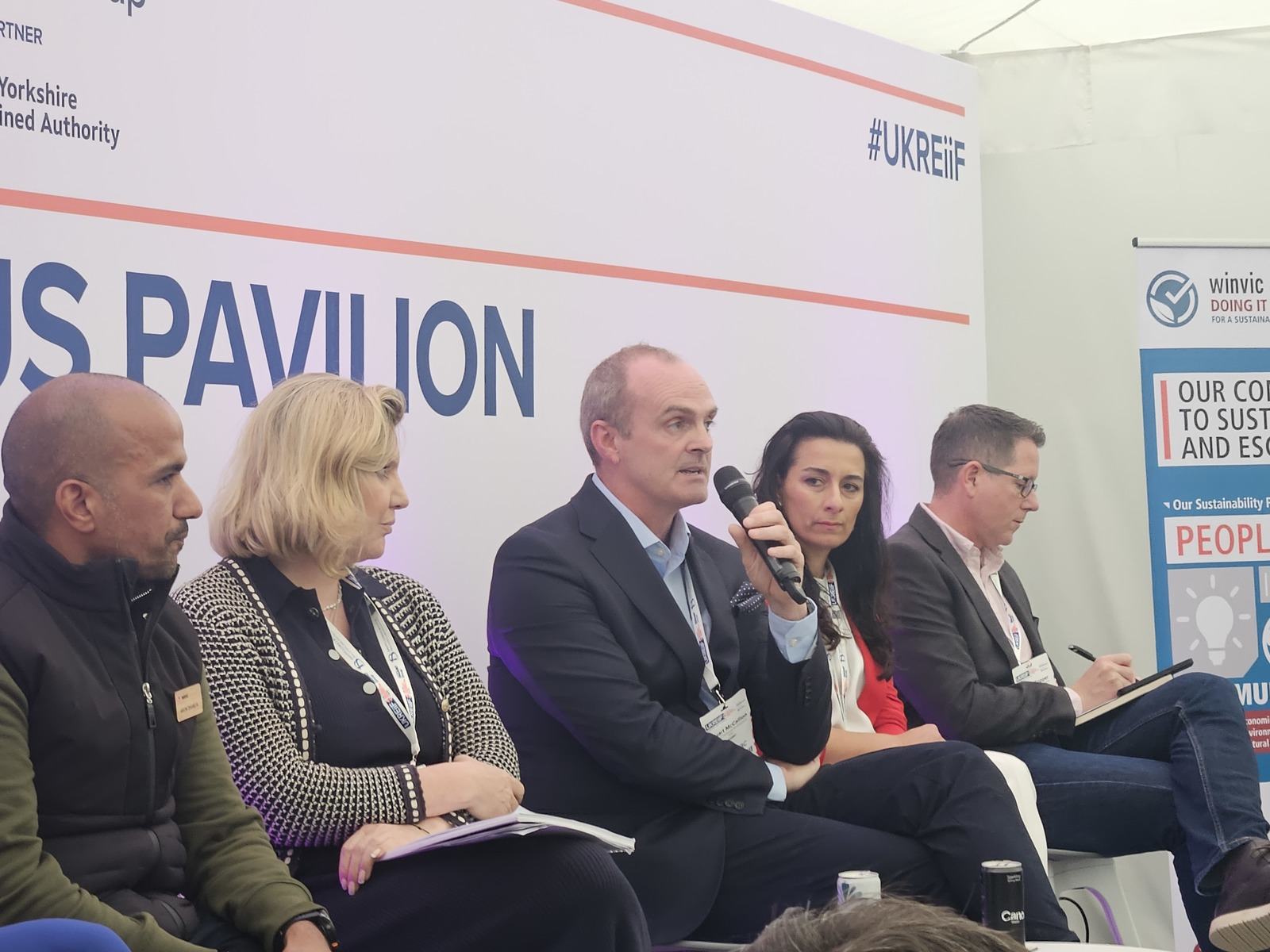 Stuart McCallion: I think we just need consistency in the data we’re getting basically. It’s a relatively immature market being able to conduct these assessments and we use a centralised consultant to validate all of our LCAs which I think is extremely important. Consistency in all stages as well – you know we look at the LCAs at the start and in the concept design stage two – and we need to make sure we have the data there to be able to do that effectively. So, more training, I think, for the industry, more consistency, more standardisation and we should see things improving quite dramatically.
Stuart McCallion: I think we just need consistency in the data we’re getting basically. It’s a relatively immature market being able to conduct these assessments and we use a centralised consultant to validate all of our LCAs which I think is extremely important. Consistency in all stages as well – you know we look at the LCAs at the start and in the concept design stage two – and we need to make sure we have the data there to be able to do that effectively. So, more training, I think, for the industry, more consistency, more standardisation and we should see things improving quite dramatically.
It’s very important for us; our most important assets are our customers in our facilities, and we want to make sure we lower their operational energy usage but also make our buildings the best we possibly can for them.
Danielle, how important are things like standardisation of data collection to you when you’re making decisions about which projects to support?
Danielle Sheppard: It’s quite overwhelming sometimes for an investor or developer, especially a relatively small one. We don’t have the luxury of SEGRO’s or Prologis’ fantastic internal knowledge, so we rely on our supply chain, our consultants and our contractors. It can be really daunting to know who to listen to because there is so much inconsistency.
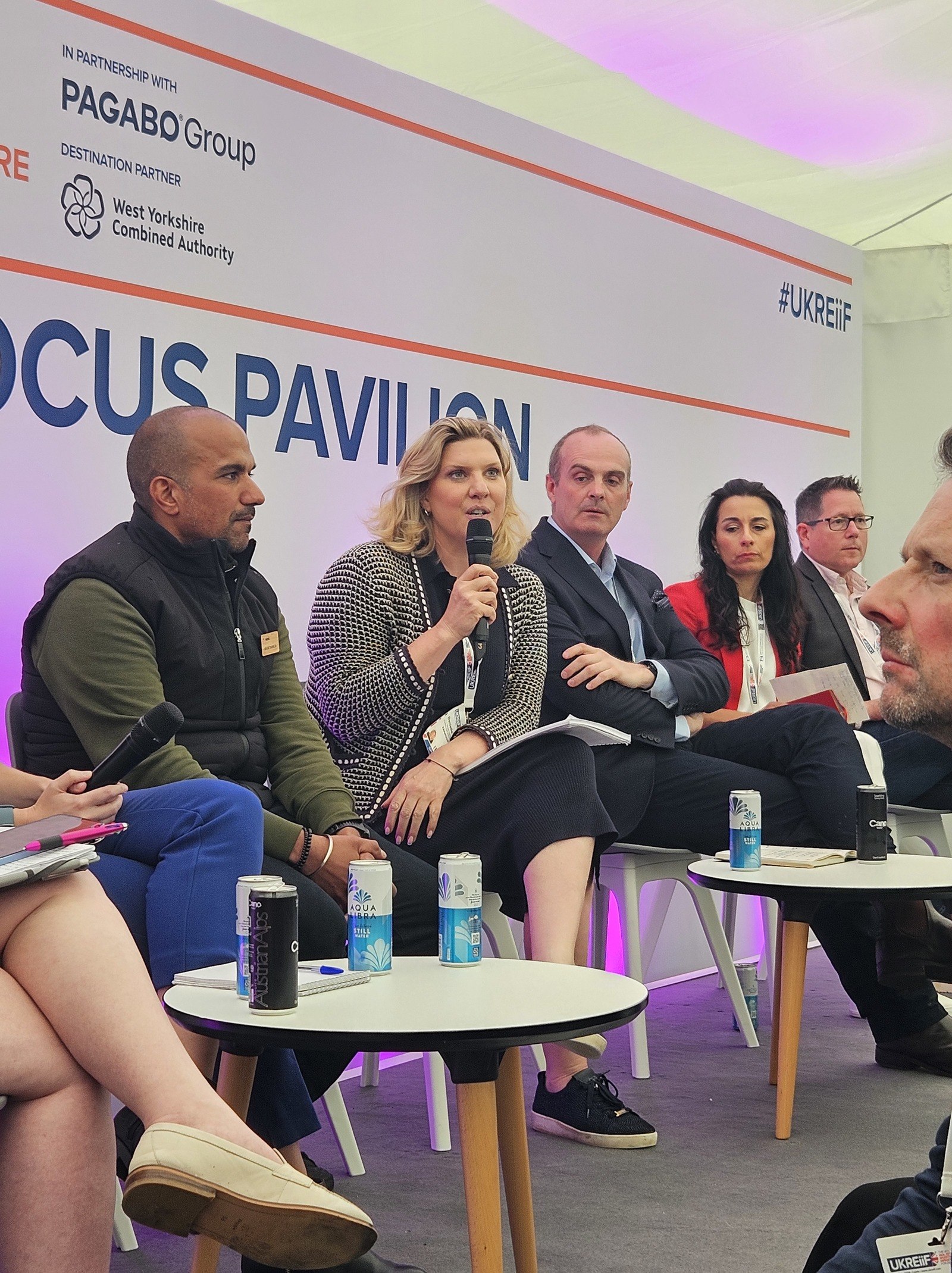
When I took over as head of sustainability, my Mantra was that we really had to be authentic, so we do try and be absolutely transparent in everything we do. This inconsistency is not at all helpful to an investor because when you’re trying to be authentic and you’re trying to be honest about what you’re doing and there is no standardised version it can be really difficult.
We do try and work with people that can give us that value add. We worked with Winvic recently and they challenged us – are we going far enough, have you thought about doing this, have you looked at this? That’s incredibly valuable to people like us that don’t have the massive inhouse expertise. What else is encouraging is that competitors will talk to each other. There seems to be this real drive – it’s now something you want to do and people are really happy to share knowledge and information and push for the sort of common good.
What Frameworks do you use to determine whether you’ve actually achieved a Net Zero building?
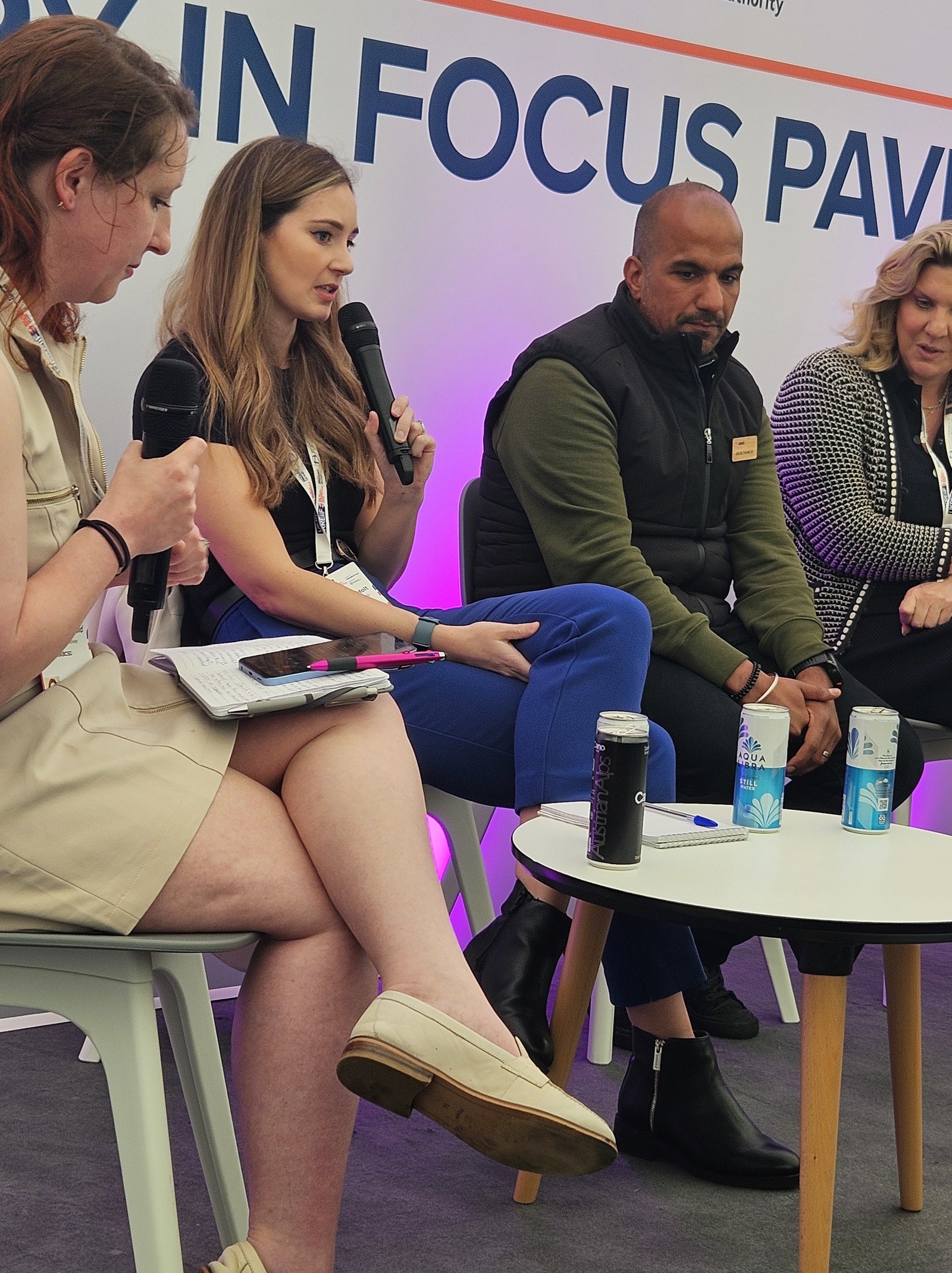 Fiona Lomas-Holt: Historically we’ve been using the UKGBC (UK Green Building Council) Net Zero Framework that came about in 2019 and was picked up very rapidly, particularly by the spec builders, so logistics and office developers. It was offset based, it wasn’t really science-based – it was very good in principle, but we needed something more. What is emerging now is the Net Zero Carbon Building Standard, which I’ve personally worked on to help develop that, and that standard will be coming forward in late summer. It will be limit based so it puts everyone on that Level Playing Field.
Fiona Lomas-Holt: Historically we’ve been using the UKGBC (UK Green Building Council) Net Zero Framework that came about in 2019 and was picked up very rapidly, particularly by the spec builders, so logistics and office developers. It was offset based, it wasn’t really science-based – it was very good in principle, but we needed something more. What is emerging now is the Net Zero Carbon Building Standard, which I’ve personally worked on to help develop that, and that standard will be coming forward in late summer. It will be limit based so it puts everyone on that Level Playing Field.
Winvic and the developers that we work for, which are already putting in the principles of previous Net Zero Frameworks, we’re aiming for these limits. We know how to engage the supply chain, the contractors, the designers so we’re really looking forward to that standard coming forward.
What tools do you use to actually deliver building level Life Cycle Assessments and does there need to be harmonisation?
Martin Cooper: We use a consistent consultant. In the UK there’s two parts to that – methodology that is the RICS (Royal Institution of Chartered Surveyors) guidance and Prologis has chosen to use One Click LCA as its tool of choice. It’s not perfect but we really like the open-source nature of the EPD information. We have a kit of parts that build our buildings which is reasonably standard, and we think it’s therefore worth investing in those EPDs and sharing those so that we’ve all got LCAs that mean something. That can be used here in the UK but also globally to give us that consistency of approach. We’re then going to be able to compare results across our entire portfolio.
Anna Tsartsari: We’ve seen that as we work in Europe as well with the EU Taxonomy, having the environmental performance declarations is quite important to provide the evidence for compliance. I do agree with you, Martin, on One Click. When you work on global projects, it is definitely a good tool to use as it provides some consistency, especially when you’ve got the EPDs in place.
Arun Thaneja: As well, the industry needs to realise that when you’re talking about a piece of steel or concrete you might say I’ve got an EPD, but concrete mixes and steel requirements are changing and evolving. Each individual component, whether it’s a piece of steel from British Steel or from the continent, needs its own EPD. A subcontractor could send me an EPD for the bit of steel, but it might not be relevant for that piece of steel. Then we have to go back and use a ‘like for like’ EPD in One Click – that’s where the data is now starting to lack, so there needs to be more EPDs relevant for each and every product on the market to lead to carbon conscious decisions during design and procurement phases.
How do we balance or navigate that decision between generic versus specific data sets?
Danielle Sheppard: I think I feel comfortable as long as I’m being authentic. As long as we specify where it’s come from and how we’ve arrived at that data then I feel that that we’ve been authentic and that’s okay.
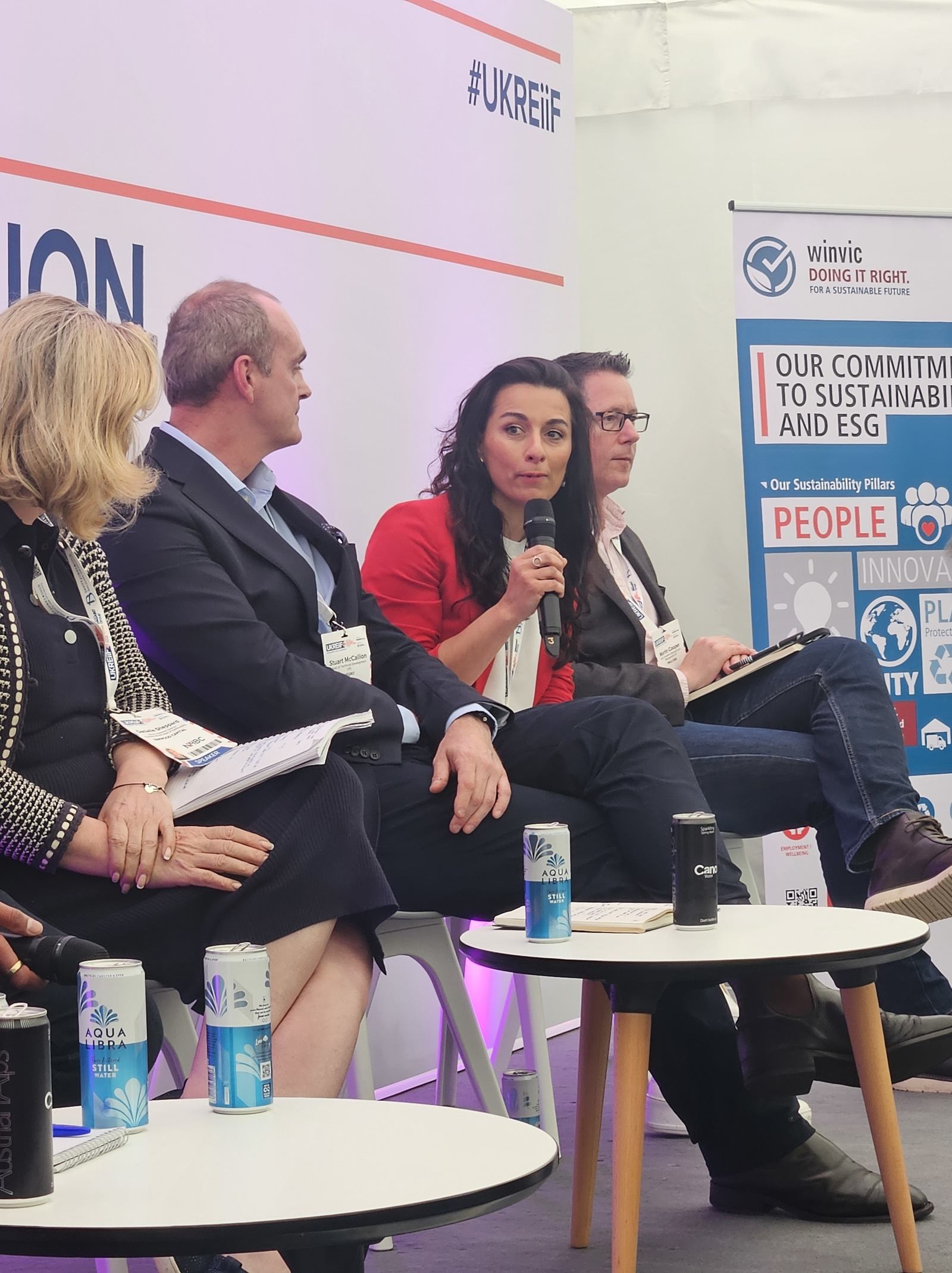
Martin Cooper: This is all about a trajectory towards Net Zero. We don’t have to do it today, but we definitely have to get there at the very latest 2050. If you think about the carbon that a building is going to use over its entire life, between about 25 and 30 per cent of that is embodied carbon. The vast majority of the energy that building is going to use is operational carbon – if we can therefore address that through PV Renewables, you know making it really airtight, then that drops to zero. Steel and concrete make up pretty much 60 per cent of the embodied carbon of a building – if we can solve steel and concrete then we we’re pretty much there. There are some fairly chunky assumptions in there, but it’s about getting the best data you can now and using that data to inform design and design out carbon. We are moving along that trajectory together towards Net Zero.
Anna Tsartsari: I do agree and I would say that on that basis if we reuse buildings we’ve already sorted the 60 per cent. So, for me, yes a fabric first approach but before that a retrofit first approach and we can get there easier.
What makes the panellists feel positive about the future?
Arun Thaneja: In the last two years as a business we’ve seen a large uptake and drive in Net Zero developments, so there is hope that the industry is starting to push in the right direction more and more. Now we’re seeing specifications for tender where there are ESG criteria, Net Zero criteria – there’s targets being defined, where before we [as the main contractor], were defining the targets. When the Net Zero Building Standard comes out this year, there is hope that they will define further targets and limits that we will be asked to meet, so a positive take on where the industry is heading.
Anna Tsartsari: I’ve been quite amazed actually with the lack of regulation. However, the extraordinary collaboration between everyone – there are no competitors I think in the sustainability environment, we’re all there together and just looking at the panel today it proves that.
Martin Cooper: We can compete on other things, you know rent and exciting stuff like locations, but Prologis and other owner operators are working together at sustainability lead level – to basically exchange knowledge and iron out problems, but also where it’s appropriate, influence what’s going on.
With Life Cycle Assessments, do you look at whole of life or are you doing just up to completion?
Arun Thaneja: 25 years is the typical design life of a building that’s in the developer specifications, but we also then look at a 60-year life cycle which takes you to other stages in the LCA assessments; for maintenance, reuse, operation and then we pick up demolition as well so it gives the end user-occupier an LCA with the defined metrics that they would need to account for if they were to facilitate a change in that building or the methodology of that building.
Fiona Lomas-Holt: We look over the life of the building because some of the decisions you make that might reduce your upfront carbon could increase your whole life carbon. Floor finishes is a is a good example – you could look at carpets versus ceramic tiles, you’re going to replace one much more often than the other, you have to look at its maintenance, replacement and end of life as well.

How do you collect material data from supply chains and what criteria do you use to assess what’s accurate?
Arun Thaneja: We use the specification, and we ask for the procurement route of that material, so we’ll look at where the virgin material was first generated and then how it’s arrived on site through transportation and then how it’s been established. It’s generally working with the supply chain, which we tend to do from very early stages so that when we get to PC (Practical Completion) we have accurate data or as accurate data as we can get for that building.
Stuart McCallion: It’s really important to understand where it’s come from. For instance, you know everyone’s saying we have fantastic lots of structural timber that reduces carbon in our buildings. We are the third largest importer of timber in this country – if I want to build a warehouse using glulam for instance you know it’s got to be imported. Understanding Materials Passports and making sure we have that the accuracy of that data is so, so important.
I mentioned I’d come back to the O word – offset. I know that can be a little bit of a polarising topic but what is the panel’s opinion on whether offsetting is a long-term sustainable approach compared to reducing carbon at source?
Stuart McCallion: I was at the Green Building presentation this morning actually and I understand offsetting is going to be voluntary. No it’s not a long-term approach – how many trees can you buy at the same time really, and you know those trees are going to take what 20, 30, 40 years to mature and take the carbon out?
Martin Cooper: Offsetting is the last thing that you would do, it’s all about reducing embodied and operational carbon. Increasingly any PR from Prologis, it won’t talk about Net Zero buildings. We are moving away from that into low and reduced carbon. It’s about absolutely reducing that carbon and making the need for offsetting the bare minimum.
Anna Tsartsari: Then there’s the next step which is reusing because otherwise we cannot meet the targets. So, we’ll reach a point where we’ve reduced so much but that’s not enough to get to the Net Zero so how can we bring in the circular economy.
Stuart McCallion: I was introduced to an app last week – I call it a material dating app. So if you do your pre-demolition survey you know what you’re going to take out, all the waste. Then this app magically dates to somebody else or someone’s need – I think the use of technology is going to really help in this in this way.
Danielle Sheppard: Carbon offsetting is something I’ve struggled with because there’s pros and cons but it’s actually something that I’ve grown to really value. I agree totally with what everyone said – we need to stop using – but we use carbon offsetting at Barwood in a really positive way. At first, I was worried we were being slightly patronising – developed countries paying for carbon offsetting to replace clay ovens in Ethiopia or the like, it just felt something that was sort of morally wrong.
But the more I looked into it, the more we found we engaged with some of these communities and also got our staff to engage with what we were doing – really thinking about the offsetting schemes we were using. We’re not there yet, so we do still need to rely on offsetting. We try to use it as a really positive thing to think about other communities that are affected by climate change, and that aren’t as blessed as we are in this country.
Are any of the panel members trialling innovative materials? Re-use or circular economy in particular?
Stuart McCallion: We are. I have a development in London where we’re demolishing and we’re going to reuse the steel in another new development. You can’t use all sections, but it’s a start. I’d like to do a lot more quite frankly – I’d like to have like a little Innovation Hub or actually it’s something we need to do together.
Danielle Sheppard: I love the idea of an Innovation Hub. We have a little innovation group at Barwood that go away and do the research but if we could do that – cross developers and investors – together; I love that idea.
I’m curious about reusing steel or other materials, do you need to put that through any integrity testing?
Stuart McCallion: You do have to make sure you know the steel hasn’t been stressed or in a fire or something. There are checks and measures to ensure the integrity of that material but there’s lots of other stuff you can crush up. If you just look at the building and try and use as much as possible, we’re in a good place.
Audience questions
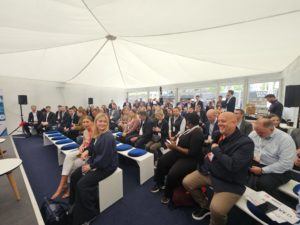 As a fellow civil engineer one of my great frustrations is that during the design you are specifying and trying to make things as sustainable as possible. When you release it to the contractors, value engineering kicks in and a lot of materials get subsidised, or you can’t get a hold of them in the supply chain. So, when you’re carrying out your LCA at practical completion how are you validating that the material you specified is what was brought on site?
As a fellow civil engineer one of my great frustrations is that during the design you are specifying and trying to make things as sustainable as possible. When you release it to the contractors, value engineering kicks in and a lot of materials get subsidised, or you can’t get a hold of them in the supply chain. So, when you’re carrying out your LCA at practical completion how are you validating that the material you specified is what was brought on site?
Martin Cooper: We use a consistent consultant for our LCAs, and we take all of the data from the contractor so that we know what has been built. Then we get it externally validated by another entity and they give us a data quality score. So, we might have a great embodied carbon result for example but if it’s got a really poor data score then we’re not entirely sure that that’s right.
Arun Thaneja: When materials come to site, we track the deliveries of those materials into the gate and as part of the delivery it gets QR coded back to head office. We align them with our procurement orders so that we know what materials have actually been delivered and how they’ve been generated. As Martin said, once we’ve finished the LCA it is third party verified.
Anna Tsartsari: We are following a similar process. One of our clients is currently asking us to do a monthly carbon reporting for what is coming to site, so we are aligning all the valuations. When you follow it through every month, you get to the end and there are no surprises.
We’ve talked about kind of the re-use of materials in the deconstruction process, but do you think the LCA process allows for that?
Arun Thaneja: We do the LCA for 25 and 60 years. There’s an element of calculation in the EPDs and in the data that’s provided for that material – that in 25 years that component material could be reused as part of a new cladding system, or that concrete could be crushed. Those assumptions are made and then obviously at 60 years, as well as a demolition phase, we tend to make an allowance that it will be demolished and it will go through circular economy. If it actually does or not, obviously we can’t say, but the [answer on the LCA] process is that yes it would.
Fiona Lomas-Holt: We model quite a lot of demolition projects so we can see where those materials are going, so that informs some of the decisions we’re making in our models for that end-of-life stage. Obviously, we don’t know when or how a building is going to be decommissioned but at least we are thinking beyond the immediate.
My question relates to operational carbon with embodied carbon. Larger firms have the ability to benchmark against their own portfolio properties, but is there an existing benchmark across the industry? For example, for a specific property, there’s this much carbon emissions per square metre.
Fiona Lomas-Holt: The issue is there’s so many benchmarks and targets out there. The new Net Zero Carbon Building Standard will look to bring that all together and split it down per building type – so we will have a logistics one, we will have high-rise residential office. So that will address some of those benchmarking concerns.
As well, there’s a new form of operational building assessment coming in, called Neighbours, that is the next evolution on from Energy Performance Certificates. That will start to benchmark commercial buildings on not just energy but also water usage and eventually waste usage. That’ll be really useful to try and push those laggards to say come on guys you’re behind the time.
Closing reflections
I’ll ask each of our lovely panellists to just give a final kind of closing reflection.
Martin Cooper: To reiterate our point that Net Zero is a collective responsibility – it’s something that we’ve all got to strive for, it’s not a marketing strapline. By collaborating across the industry we can all play our part and achieve it together.
Anna Tsartsari: I just want to talk about our mission really as engineers, architects, and sustainability consultants, is to design beautiful buildings that are durable and they bring wellbeing to the people that use them. Data is definitely important in how we design them and assess them, but at the end of the day we need to bring in innovation and imagination, and most importantly collaboration, to get the right targets.
Stuart McCallion: I’m really looking forward to the Green Building Standard being released later on this year. I think that’s going to be a step change for the whole industry. It’s going to align us, is going to make it clearer, it’s going to be more concise. Anything we can do to demystify this sector I think is a good thing.
Danielle Sheppard: I’m a passionate believer that we have to put all this energy and creation and innovation into prolonging the life and reusing current buildings. I really believe that we can’t build our way out of the environmental crisis and that we’ve got to see the same energy focus and innovation go into how we prolong the life of the existing built environment as well as new build.
Arun Thaneja: Talk of innovation is all well and good but one barrier that we still have, and we will have for a number of years is institutionalisation. It’s getting people’s mindsets – that what we’ve done for the last 10 to 15 years needs to change if we’re going to start moving forward and hitting the Net Zero goals that we’ve got.
Fiona Lomas-Holt: For me it’s there’s no silly questions and I think sometimes we don’t ask enough questions of our supply chains, of designers, of contractors. The more we push on supply chains, the more we ask questions – do you have an EPD, do you have plans? That’s what drives innovation, that’s what drives change; so don’t be afraid to ask those questions.
To find out more about Winvic’s, get in touch on sustainability@winvic.co.uk
For more information about UKREiiF, view the event here: https://www.ukreiif.com


 Share
Share
 Repost
Repost
 LinkedIn
LinkedIn
 Email
Email


